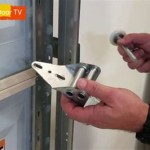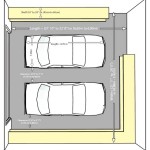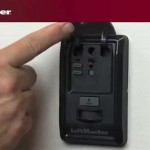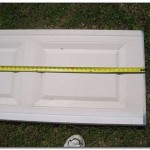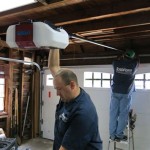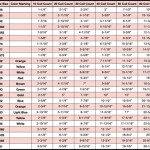Garage Door Torsion Springs: A Guide to Menards Options
Garage door torsion springs are critical components of a garage door system, responsible for counterbalancing the weight of the door and facilitating smooth, safe operation. When a garage door malfunctions, the torsion springs are often the prime suspect. For homeowners seeking replacement springs, Menards offers a variety of options. This article provides a comprehensive overview of garage door torsion springs available at Menards, covering their types, selection criteria, safety considerations, and installation nuances.
Understanding the role of torsion springs is essential before exploring the specific offerings at Menards. These springs are mounted horizontally above the garage door opening. As the door closes, the springs wind up, storing energy. When the door opens, the stored energy unwinds, assisting in lifting the heavy door. This counterbalance minimizes the effort required from the garage door opener motor, extending its lifespan and ensuring safe operation.
It is crucial to remember that working with garage door torsion springs can be extremely dangerous. They are under high tension, and improper handling can result in severe injuries. It is highly recommended that only qualified professionals handle the replacement or adjustment of these springs. This article serves informational purposes only and should not be interpreted as a substitute for professional advice.
Types of Garage Door Torsion Springs Available at Menards
Menards typically stocks several types of garage door torsion springs, categorized primarily by their wire gauge, inside diameter, and length. Understanding these parameters is essential for choosing the correct replacement spring.
Wire Gauge: The wire gauge refers to the thickness of the steel wire used to manufacture the spring. A thicker wire gauge indicates a stronger spring capable of handling heavier doors. Common wire gauges for residential garage doors range from 0.192 inches to 0.250 inches. Menards typically displays the wire gauge prominently in the product description.
Inside Diameter (ID): The inside diameter is the measurement of the hole through the center of the spring. Common inside diameters are 1.75 inches and 2.0 inches. The ID must match the diameter of the torsion tube on your garage door system. Using the wrong ID can prevent the spring from being properly installed and functioning correctly.
Length: The length of the spring, usually measured in inches, is also critical. The correct length is dictated by the specific requirements of your garage door. Too short a spring will not provide sufficient lift, while too long a spring may overstress the system. Menards provides the length of each spring in its product listing.
Left Wound vs. Right Wound: Torsion springs are also designated as either left-wound or right-wound. This refers to the direction in which the spring coils. When facing the garage door from inside the garage, the spring on the left side of the door is typically a right-wound spring, and the spring on the right side of the door is typically a left-wound spring. It’s crucial to replace each spring with one of the correct winding direction.
Menards typically offers torsion springs in various lengths and wire gauges to accommodate different door sizes and weights. Their inventory often includes springs compatible with standard residential garage doors. It's essential to consult with a Menards associate or a garage door professional to ensure you select the correct spring for your specific needs.
Furthermore, Menards may offer torsion spring kits. These kits often include not only the springs but also winding bars, which are crucial for safely adjusting the tension in the springs. However, even with these tools, professional installation remains the safest option.
Selecting the Correct Torsion Spring at Menards
Choosing the correct garage door torsion spring from Menards requires careful consideration of several factors. Improperly sized or mismatched springs can lead to door malfunctions, safety hazards, and potential damage to the garage door system.
Identifying the Existing Spring Specifications: The most reliable way to determine the correct replacement spring is to identify the specifications of the existing spring. Often, the wire gauge, inside diameter, and length are printed on a sticker or tag attached to the spring itself. Over time, these labels may become worn or illegible. In such cases, precise measurements are necessary.
Measuring the Wire Gauge: Measuring the wire gauge accurately requires a special tool called a wire gauge measuring tool. This tool consists of a series of slots of varying widths. By finding the slot that the wire fits snugly into, you can determine the wire gauge. Alternatively, a precise caliper can be used to measure the wire's diameter directly. Always measure the wire gauge at multiple points along the spring, as wear and tear can sometimes affect the measurement. It's also important to note that there can be slight variations in wire gauge, so consulting a professional is recommended if you are unsure.
Measuring the Inside Diameter: The inside diameter is measured from one inner edge of the spring to the opposite inner edge. Use a measuring tape or caliper to obtain an accurate measurement. As previously mentioned, common inside diameters are 1.75 inches and 2.0 inches.
Measuring the Spring Length: The spring length is measured from one end of the spring to the other. Ensure the spring is not stretched or compressed when taking this measurement. Use a measuring tape for accuracy. If the spring is broken, you will need to carefully estimate the original length based on the number of coils and the spacing between them.
Considering Door Weight: If the existing spring information is unavailable, the weight of the garage door can be used to estimate the required spring specifications. Garage door weight is typically determined by consulting the manufacturer's specifications or by weighing the door using a bathroom scale and wooden supports to lift one section at a time. Once the door weight is known, a garage door spring chart can be used to determine the appropriate spring size. These charts are often available online or from garage door professionals.
Consulting with Experts: When in doubt, it is always best to consult with a garage door professional or a knowledgeable associate at Menards. They can assist in identifying the correct spring based on your door's specifications and usage patterns. Providing them with accurate measurements and details about your garage door system will enable them to offer the most appropriate recommendations.
Safety Considerations and Installation Tips (Professional Assistance Recommended)
Working with garage door torsion springs comes with inherent risks due to the high tension they are under. Improper handling can lead to serious injuries, including broken bones, lacerations, and even fatalities. Therefore, prioritizing safety is paramount.
Professional Installation is Highly Recommended: The single most important safety recommendation is to hire a qualified garage door technician to replace or adjust torsion springs. These professionals have the necessary training, experience, and tools to perform the job safely and efficiently. Attempting to replace torsion springs without proper knowledge and equipment is extremely dangerous and should be avoided.
Understanding the Risks: Even with professional assistance, it's important to understand the risks involved. Torsion springs store a significant amount of energy. If they are released suddenly, they can cause winding bars or other tools to become projectiles, posing a serious threat to anyone nearby. Never stand directly in front of or behind a torsion spring while it is under tension.
Using the Correct Tools: If, against recommendations, you choose to attempt the installation yourself, using the correct tools is essential. Winding bars are specifically designed to wind and unwind torsion springs safely. These bars are typically made of hardened steel and have a square or hexagonal shape to fit securely into the winding cone of the spring. Never use makeshift tools or pliers, as they are not strong enough and can slip, leading to accidents. Wearing safety glasses and gloves is also crucial to protect your eyes and hands.
Releasing Tension Safely: Before removing a broken torsion spring, it is crucial to release any remaining tension. This is done by carefully inserting winding bars into the winding cone and slowly unwinding the spring. The process must be controlled and gradual to prevent the spring from snapping or releasing suddenly. Count the number of quarter turns it takes to fully unwind the spring, as this will be needed to properly tension the new spring.
Installing the New Spring: After the old spring is removed, the new spring can be installed. The steps are essentially the reverse of the removal process. The spring is positioned on the torsion tube, and the winding cone is secured. The spring is then wound to the appropriate tension using the winding bars. The tension is adjusted until the door is properly balanced, opening and closing smoothly with minimal effort. After the spring is installed, ensuring the set screws are properly tightened is critical for preventing the spring from slipping and causing damage.
Testing the Door: After installation, thoroughly test the garage door's operation. Open and close the door several times, observing for any signs of imbalance or unusual noises. If the door does not operate smoothly or if there are any concerns, contact a professional for assistance.
Garage door torsion springs are critical for the safe and efficient operation of a garage door. Menards offers a variety of options, but selecting the correct spring and ensuring proper installation are crucial. Due to the inherent dangers involved, professional installation is highly recommended.

Double Small Torsion Spring Spiral Overhead Door Roll Up Springs Flat Torquemaster Menards Tilt Compression Made In Com

Garage Door Spring Ideal Ez Set Replacement Menards 7x9 192

Double Small Torsion Spring Spiral Overhead Door Roll Up Springs Flat Torquemaster Menards Tilt Compression Made In Com

P175s 4 Pair Of 0 283 X 2 37 Garage Door Torsion Spring Menards Springs

P175s 4 Pair Of 0 283 X 2 37 Garage Door Torsion Spring Menards Springs

Double Small Torsion Spring Spiral Overhead Door Roll Up Springs Flat Torquemaster Menards Tilt Compression Made In Com

P175s 4 Pair Of 0 283 X 2 37 Garage Door Torsion Spring Menards Springs

Clopay Ez Set Torsion Conversion Kit For 16 Ft X 7 Garage Doors 156 Lbs 170 Lw White A The Home

Residential Springs Garage Door Functionality Ideal

Torsion Spring Conversion Kit For 7 High Door Part Tscnv 07
See Also

